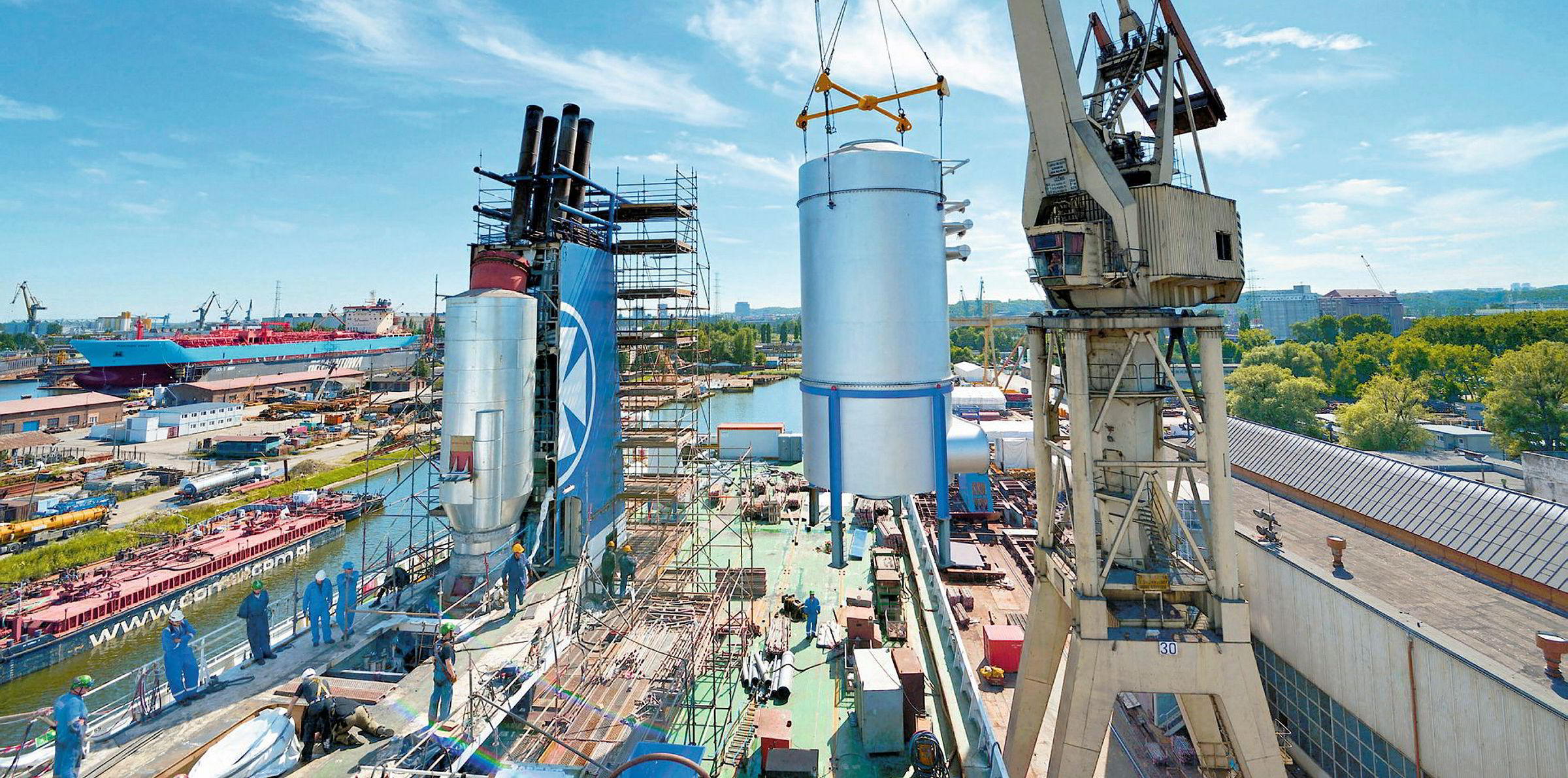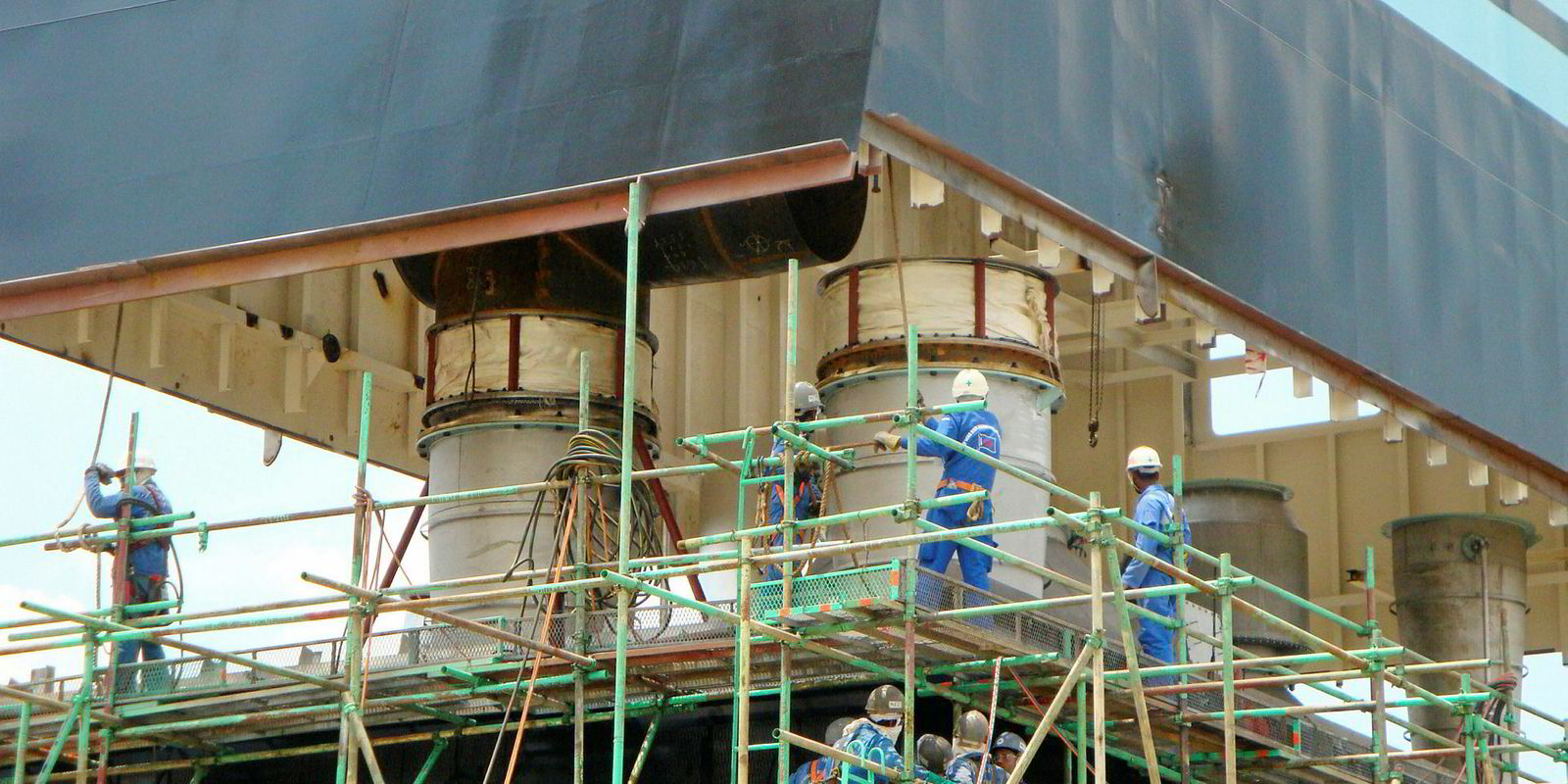Shipowners that opt for scrubber installations may face disappointing returns, judging from the price spread in current fuel derivative trading, according to some industry officials.
According to the IMO, vessels will need to switch from high-sulphur fuel oil (HSFO) to 0.5%-sulphur fuels from 2020 unless they have exhaust gas cleaning systems onboard.
With general industry expectation that HSFO would be sold at a discount of $250-$300 per tonne to compliant fuels in the initial periods post-2020, many shipowners were rushing to install scrubbers last year.
However, as of early this week, the discount is only around $175-$185 per tonne for the calendar 2020 contracts in the forward fuel derivative markets.
“A lot of people are going to be disappointed,” Simon Newman, a freight trading strategist from Phillips 66, told a Baltic Exchange forum.
While the more optimistic owners of large ships were predicting a payback period of nine months for scrubber installations, Newman said their payback time could be as long as 18 months or even three years.
For MRs and LRs with scrubbers, which consumer less bunker, it is “really going to be a struggle” for the owners to get satisfactory returns on their investments, according to Newman.
The narrow price spread results from firmer-than-expected HSFO fundamentals and weak gasoil market sentiment, the officials said.
The price of 0.5%-sulphur fuel is benchmarked against marine gasoil, whose price has been plagued by lacklustre diesel markets amid bearish macroeconomic signals, Freight Investor Services’ senior fuel oil broker Chris Hudson said.
Gasoil and diesel are both middle distillates. A large portion of their demand comes from the industrial sectors, which are often directly affected by macroeconomic conditions.
Moreover, Newman points out global refineries have been making investments in upgrading HSFO output, removing the residual fuels from bunker markets.
“People underestimate how the market behaves…refineries have been able to cut HSFO production,” Newman said.
Moreover, HSFO demand will rise as the number of scrubber-installed vessels increases.
Data from DNV GL shows the number of ships with scrubbers in operation and on order will reach at least 2,763 by the end of 2023, compared with 825 in 2018, exceeding the expectation by some shipping officials.
“We may have overcooked it on the scrubber front,” Braemar ACM’s head of research Henry Curra said.





